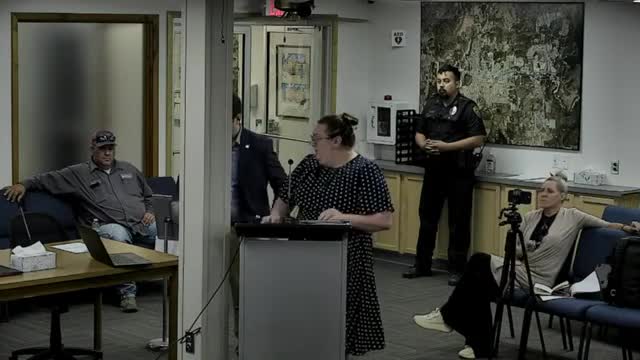Airport Master Plan Revealed with Bold Future Projections
October 01, 2024 | Mineral Wells, Palo Pinto County, Texas
This article was created by AI summarizing key points discussed. AI makes mistakes, so for full details and context, please refer to the video of the full meeting. Please report any errors so we can fix them. Report an error »

In a recent government meeting, Nathan Paulsgrove, project manager for the airport master plan, presented a comprehensive overview of the planning process and future developments for the airport. The meeting marked the conclusion of a detailed planning phase that adhered to Federal Aviation Administration (FAA) guidelines, which included data gathering, forecasting future aeronautical activity, and developing a capital improvement program.
Paulsgrove highlighted that the terminal area forecast indicates a growth trajectory for operations and based aircraft numbers that aligns with projections made 10 to 15 years ago. This optimistic outlook is based on a moderately aggressive forecast of 2.15% annual growth in based aircraft and aircraft operations, driven by regional economic activity.
Key recommendations from the master plan include raising one end of runway 13/31 to resolve a line of sight issue that currently hampers pilot visibility. Additionally, the plan proposes decoupling the runways to prevent potential runway incursions, a safety measure that addresses FAA design standards. The development plan also identifies new hangar areas, including a long-term development site near Case Holland Road.
Paulsgrove emphasized the importance of these improvements in enhancing airport infrastructure and safety, ensuring that the airport can accommodate future growth effectively. The meeting concluded with an invitation for questions, underscoring the collaborative effort between the project team and the steering committee throughout the planning process.
Paulsgrove highlighted that the terminal area forecast indicates a growth trajectory for operations and based aircraft numbers that aligns with projections made 10 to 15 years ago. This optimistic outlook is based on a moderately aggressive forecast of 2.15% annual growth in based aircraft and aircraft operations, driven by regional economic activity.
Key recommendations from the master plan include raising one end of runway 13/31 to resolve a line of sight issue that currently hampers pilot visibility. Additionally, the plan proposes decoupling the runways to prevent potential runway incursions, a safety measure that addresses FAA design standards. The development plan also identifies new hangar areas, including a long-term development site near Case Holland Road.
Paulsgrove emphasized the importance of these improvements in enhancing airport infrastructure and safety, ensuring that the airport can accommodate future growth effectively. The meeting concluded with an invitation for questions, underscoring the collaborative effort between the project team and the steering committee throughout the planning process.
View full meeting
This article is based on a recent meeting—watch the full video and explore the complete transcript for deeper insights into the discussion.
View full meeting
